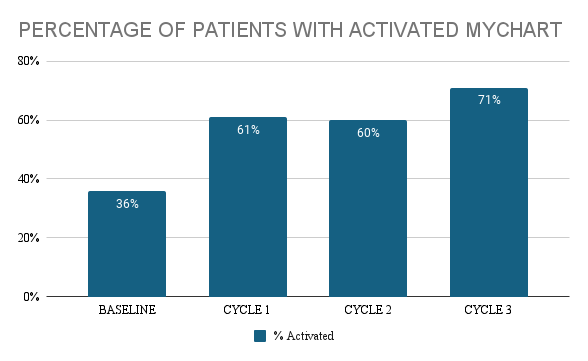Quality Improvement/Patient Safety 3
Session: Quality Improvement/Patient Safety 3
038 - Quality Improvement strategies to improve new patients’ access to MyChart in Pediatric GI clinics
Friday, April 25, 2025
5:30pm - 7:45pm HST
Publication Number: 38.6414
Heba Kamal, University of Florida College of Medicine, gainesville, FL, United States; Akhshaya Mahalingam, University of Miami Leonard M. Miller School of Medicine, Miami, FL, United States; Fangyun Shi, University of Florida College of Medicine, Gainesville, FL, United States; Patrice Jovita S.. Vigilia-Abrenica, University of Florida College of Medicine, Gainesville, FL, United States; Cristoniel S.. Abrenica, University of Florida College of Medicine, Gainesville, FL, United States

Akhshaya Mahalingam, MD (she/her/hers)
Pediatric Resident
University of Miami Leonard M. Miller School of Medicine
Miami, Florida, United States
Presenting Author(s)
Background: MyChart is a secure online patient portal that connects patients to their electronic health records, allowing them to access test results, request medications, and communicate with their care team. Patients can also schedule appointments and ask questions through MyChart. This method of patient-provider communication can also serve as a better alternative to phone calls, which can help minimize the burden on the answering teams. In this study, we leveraged a Quality Improvement (QI) project that aimed at increasing MyChart access as a pivotal way of communication. The study was conducted at the University of Florida's Pediatric Gastroenterology Department: The Main Campus and two satellite clinics.
Objective: This QI project aimed to increase the sign-up rate for new patients to MyChart by 50% at the end of the PDSA (Plan, Do, Study, Act) cycle.
Design/Methods: The study included 2,875 new patients who visited pediatric GI clinics. PDSA cycles were used to systematically address barriers, improve awareness, and establish a uniform approach for portal activation. A baseline sample audit from Jan–Mar 2022 revealed that, of 624 new patients, only 36% had MyChart access. A multidisciplinary QI team, including the clinic’s medical director, clinicians, IT/admin staff, and QI specialists, were involved in this project. Several barriers were identified, such as high patient volume, low family awareness, and lack of designated teams to facilitate portal activation. The PDSA cycles aimed to address each of these barriers.
Results: Each intervention led to a higher MyChart activation rate, increasing the overall signup rate from 36% to 71%, resulting in a 35% increase by the end of all PDSA cycles. Using the fishbone tool for root causes analysis, several factors were identified for a lower signup rate. Age cut-off in pediatric patients was found to be one of the obstacles to signing up for MyChart at home, as patients older than 11 years require a signed consent form before parental MyChart access. Notably, 56% of patients had Medicare/Medicaid coverage, highlighting the importance of MyChart for underserved populations. A provider feedback survey was done to evaluate the use of MyChart. 71% found that MyChart improved their workflow efficiency, while 85% found that MyChart positively impacted their communication with patients. 57% found that it reduced the volume of patient calls.
Conclusion(s): This QI initiative demonstrated that multifactorial interventions could positively impact MyChart enrollment. This can facilitate more access to a user-friendly patient portal and increase healthcare providers' efficiency.
Trends in MyChart Activation Among Patients Over Multiple Cycles



